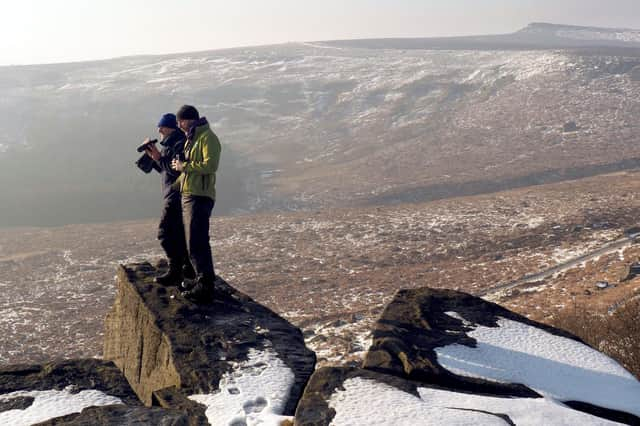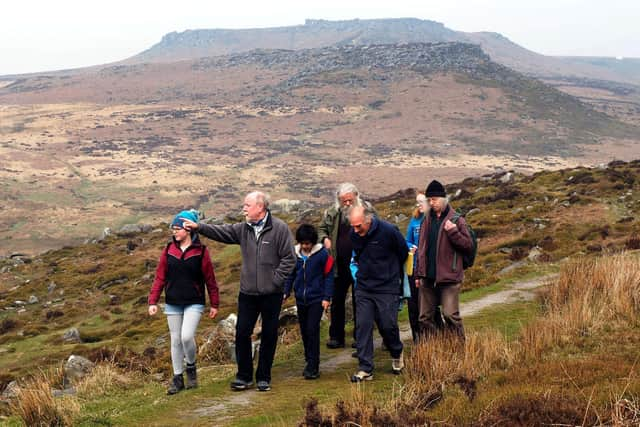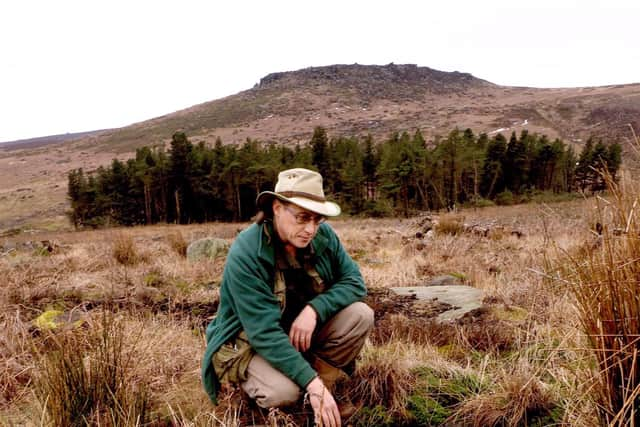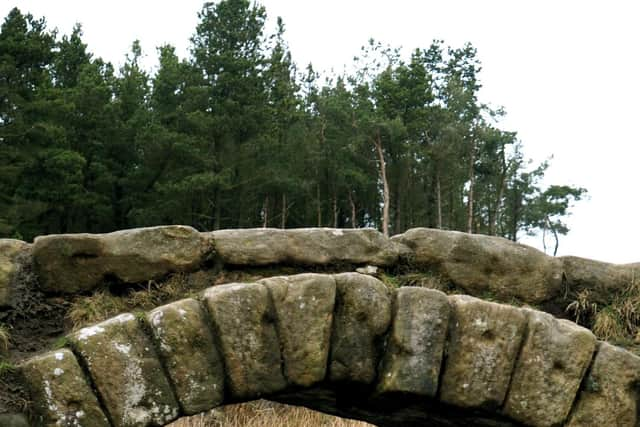Nature is taking a new course at Burbage Valley - Sheffield's windswept moorland


“I love Burbage, it’s fantastic,” says Angus Hunter, who’s been visiting the site in all weathers, day and night, for years.“It’s such a good example of habitat,” he adds, betraying his visitor status as an ecologist rather than a free climber or slack liner (among the habitat’s more out there examples from Sheffield’s recreational sports community).The Burbage Valley, almost entirely within the Steel City boundary, has been one of the go-to locations over the last 18 months for city dwellers needing a wilderness on their doorstep during the pandemic.
Key workers and at risk Sheffielders have all used the wild Burbage moors to escape Covid stress, or even aid their recovery from the disease.
Advertisement
Hide AdAdvertisement
Hide AdSome may have noticed how the valley has been changing. Angus, Sheffield Council biodiversity officer, says it’s a great example of how land managers like the National Trust, Sheffield Council and the Eastern Moors Partnership can successfully work to ‘rewild’ a landscape.


“I’ve seen cuckoos all over the valley last year, we’ve been out at night with nightjars clapping their wings overhead, and when it’s quiet I’ve met the new batchelor herd of red deer, who look at you with some disdain before heading back under the trees.”
Some of us may remember the dry and crumbling pine forest in the rough shape of the British Isles which was carelessly planted in the late 1960s after a reservoir scheme was rejected by the city council. The lodgepole pine and Japanese larch turned out to be the wrong trees in the wrong place, and eventually started to fall down and present a fire risk.
But a national Nature Improvement Area grant allowed most of the plantation to be felled, with new native trees including alder, birch, rowan, oak and willow planted instead.
Advertisement
Hide AdAdvertisement
Hide AdNature is taking its course, as it does, and the valley away from the remaining plantation is now losing its treeless character formed by past generations of heavy sheep farming and grouse shooting. Uncommon birds like nightjar, long eared owl, redstart and cuckoos have found a home after being absent or rare visitors a few years ago, and the young trees are either being nibbled by deer or gradually establishing themselves to form the patchy mixtures of moorland landscape that would have been more familiar to the bronze age builders of the valley’s Carl Wark hill fort thousands of years ago.


The rewilding of one of Sheffield’s favourite landscapes has been a ‘phenomenal success’ says Angus.
Last year saw a huge increase in visitors, he says, and although he welcomes people enjoying the city’s wild places, he asks outdoor citizens to respect them too. Take your litter home rather than leave your disposable tent, for example.
“And fires and barbecues: just don’t,” Angus says, after once spending a few hours using his water bottle and the Burbage Brook to damp down a smouldering pile of pine needles.
Advertisement
Hide AdAdvertisement
Hide AdOne rare animal still struggling in the valley is the water vole, because too many dogs explore off their leads during the spring and summer.“People don’t realise that a dog like a terrier has been bred to kill small animals.” Letting your terrier run free in a habitat containing the nation’s rarest small mammal is not a good idea, he notes.But most Sheffielders do love and respect the new Burbage, evidenced by the climbers who work to protect the valley’s rare ring ouzel birds, and volunteers who’ve planted thousands of trees.


The old ways of managing the countryside were not good for biodiversity, says Angus. “We’ve had to change our ways. And Burbage is a good example of what we’re hoping to achieve.”
See SCC Parks and Woodlands social media for autumn tree planting schemes.